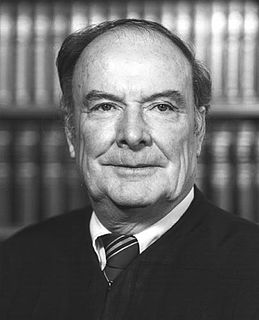| Javins v. First National Realty Corp. | |
|---|---|
 | |
| Court | United States Court of Appeals for the District of Columbia Circuit |
| Full case name | Ethel Javins v. First National Realty Corporation |
| Argued | January 16 1970 |
| Decided | May 7 1970 |
| Citation(s) | 428 F.2d 1071 |
| Holding | |
| A warranty of habitability, measured by the standards set out in the DC Housing Regulations, was implied by law into leases of urban dwelling units, and breach of the warranty gave rise to a breach of contract claim. | |
| Court membership | |
| Judge(s) sitting | Circuit Judges James Skelly Wright, Carl E. McGowan, Roger Robb |
| Case opinions | |
| Majority | James Skelly Wright |
Javins v. First National Realty Corp., 428 F.2d 1071 (D.C. Cir. 1970), was a case decided by the D.C. Circuit that first established the warranty of habitability in landlord–tenant law. The court determined that if the premises become uninhabitable, the tenant is freed from their obligation to pay rent. [1]
A legal case is a dispute between opposing parties resolved by a court, or by some equivalent legal process. A legal case may be either civil or criminal law. In each legal case there is an accuser and one or more defendants.
Habitability is the conformance of a residence or abode to the implied warranty of habitability. A residence that complies is said to be habitable. It is an implied warranty or contract, meaning it does not have to be an express contract, covenant, or provision of a contract. There was no implied warranty of habitability for tenants at common law and the legal doctrine has since developed in many jurisdictions through housing laws and regulations. Habitability is synonymous with tenantability.

Landlord–tenant law is a part of the common law that details the rights and duties of landlords and tenants. It includes elements of both real property law and contract law.
Tenants of Washington, D.C.'s Clifton Terrace Apartments, including Ethel Javins, Rudolph Saunders and Stanley Gross, had refused to pay their rent due to the conditions in the building complex. First National Realty sued those three, as well as other rent strikers, for possession. The first trial took place on June 17, 1966. The tenants attempted to introduce evidence that the dwellings were uninhabitable, including bags of mouse feces, dead mice, roaches and the testimony of a housing inspector that there were more than 1000 code violations. However, Judge Austin L. Fickling disallowed the evidence, and ruled in favor of First National Realty. [2]

Washington, D.C., formally the District of Columbia and commonly referred to as Washington or D.C., is the capital of the United States. Founded after the American Revolution as the seat of government of the newly independent country, Washington was named after George Washington, first President of the United States and Founding Father. As the seat of the United States federal government and several international organizations, Washington is an important world political capital. The city is also one of the most visited cities in the world, with more than 20 million tourists annually.

Clifton Terrace are historic structures located in the Columbia Heights neighborhood in the Northwest Quadrant of Washington, D.C. Frank Russell White and Albert Moreland Schneider designed the three building apartment complex in the Colonial Revival style. They were inspired by the garden city movement. Harry Wardman built the complex from 1914-1915 along the 14th Street streetcar line. It was listed on the National Register of Historic Places in 2001.
Austin LeCount Fickling was the first African-American judge of the District of Columbia Court of Appeals, the highest court for the District of Columbia.
Javins, Saunders, Gross and a fourth tenant, Gladys Grant, appealed the decision to the District of Columbia Court of Appeals. Edmund E. Fleming, the tenants' lawyer, argued that the court should find an implied warranty of habitability in the lease, based on the idea of constructive eviction. Despite the fact that briefs were submitted relatively quickly, the oral argument for the Court of Appeals case did not occur until 2 years after the initial trial. During that time, Sidney Brown, the owner of First National Realty, was put in jail for heating system code violations. The Court of Appeals affirmed the lower court's decision, and the tenants appealed to the D.C. Circuit. [3]

The District of Columbia Court of Appeals is the highest court of the District of Columbia. Established in 1970, it is equivalent to a state supreme court, except that its authority is derived from the United States Congress rather than from the inherent sovereignty of the states. The court is located in the former District of Columbia City Hall building at Judiciary Square. The D.C. Court of Appeals should not be confused with the District's federal appellate court, the United States Court of Appeals for the District of Columbia Circuit. The D.C. Court of Appeals and the Superior Court of the District of Columbia comprise the District's local court system.
Constructive eviction is a term used in the law of real property to describe a circumstance in which a landlord either does something or fails to do something that he or she has a legal duty to provide, rendering the property uninhabitable. A tenant who is constructively evicted may terminate the lease and seek damages.
Judge J. Skelly Wright's opinion sets up a contrast between the "old doctrines" of landlord-tenant law, which were based on feudal property law, and the modern approach to leases, which could be considered contractual relations between landlords and tenants. Wright says that leases of "urban dwelling units" should be "interpreted and construed like any other contract." [4] Therefore, as contracts for sales of goods have warranties of quality under the common law, leases create implied warranties of quality in housing. Tenants who are being sued for nonpayment of rent have the right to introduce evidence of housing code violations - if the landlord is not providing a habitable environment, the contract is breached and tenant does not have to pay rent. [5]

James Skelly Wright was a United States Circuit Judge of the United States Court of Appeals for the District of Columbia Circuit and previously was a United States District Judge of the United States District Court for the Eastern District of Louisiana.




